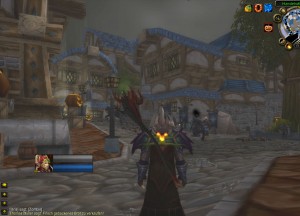Improving your development with the aid of gamers!
During my ongoing literature review I often discover interesting facts about things I’ve never thought about. Sometimes I can connect these facts with my own observations: The result is mostly a completely new idea why things are as they are. Maybe these ideas are new to you, too. Therefore I’ll share my new science based knowledge with you!
This week: This time, I discuss the idea to improve the development of new control interfaces with the aid of gamers. Gamers provide a completely different approach to the usability of interfaces and thus might provide good suggestions to make the interface more intuitive.
I’ve presented the concept of early access games in a previous article[1]. One of the main advantages of this concept is the early contact to interested players, who can suggest good improvements and give useful feedback to the game while it’s still in the development process. The developers then can implement these suggestions and release a game with a higher quality, that matches the interests of the players. Additionally, these early access players do all have a different background and a different playstyle. Furthermore, these early access players aren’t involved in the development as internal Q/A teams. They might provide a completely different point of view, which is completely new to the developers and helps them to come up with a new idea.
One of the most important feedbacks the developers can receive are suggestions towards the usability of the game interface and control options. They can rate, if all features have a good mechanic and if they feel comfortable while playing the game.
At this point, I think about the question, if it would be possible for other developers who work in a completely different area, to take advantage of this early access concept. I know, this is a complex idea, because in most cases, these developments are top secret and new features will be only revealed on a huge presentation of the new product.
However, let’s imagine a company that is currently developing a new aircraft. The new plane should take advantage of an improved glass cockpit[2] with several new interface options. Of course, the company will brainstorm about the usability and do several test flight sessions with test pilots. On the other hand, this involves only „few“ employees who mostly share the same point of view.
In todays gaming community, simulation games are still quite popular and gamers are interested in playing around with these simulations. Gamers are also used to learn new interfaces from scratch without reading a manual at first. These video game players would just start the flight simulation game and start to experience it right away. They would fly the simulated plane at its limits and thus they would rely on the interfaces provided by the game.
If a player in an early access game would have some issues with the usability with an option or with the structure of the menu of the interface, he would report this to the developers and they could adjust the interface. The same process can be applied to the development of a new glass cockpit. If gamers aren’t happy with the usability, they could report this issue and the developers can adjust this. Apart from this, gamers are used to learn from scratch and thus they like to have all important options visible. This approach is also important if something has to be operated under stressful situations like a landing under bad weather conditions. The design has to be intuitive and lead the user through the menus without requiring too much background information. Additionally, if the interface is intuitive, it won’t distract the user from the main task.
As a conclusion, gamers don’t need to hold a pilots license to rate the usability of an interface. They will just play the simulation and try out different things. They provide a completely different point of view and require an intuitive interface design. The interface design is one of the key features, when it comes to reducing risks while operating a plane.
With that being said, why not trying to improve the development of new products with a simulation gamers can play?
However, there might be a problem because things are normally kept secret while they’re under development. A new version of a car is tested in the wilderness and new features are only revealed during glamorous presentations. On the one hand, this is a good practice to keep the curiosity high. On the other hand, how long does it take until a shiny presentation is forgotten? A good, realistic and still enjoyable simulation of the own product lasts longer. New consumers can start experiencing the product even if it’s still under development. They can share their experiences with others and the new product might be better known when it’s released than when it’s released after one single presentation.

